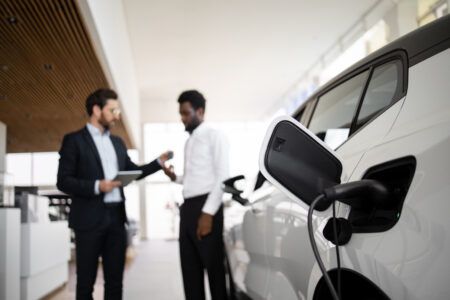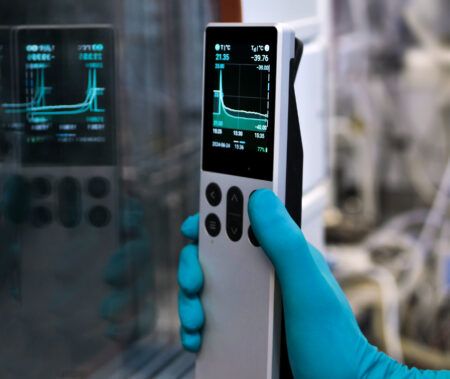YASA’s Engineering Director Chris Woolley talks us through his career path to date, and shares his vision of an EV future
What is your career path to now?
My journey has been an exciting one, moving through several leadership engineering roles across the global automotive industry. Currently, I’m the Engineering Director at YASA, where I’ve been focused on pushing the limits of our axial flux electric motor technologies for the past three years. At YASA, we’re developing unique electric motors that are smaller and lighter than anything else on the market, making them much more power dense – truly revolutionary stuff.
Before joining YASA, I spent nearly four years at Jaguar Land Rover, where I led electrification, transmission and driveline test operations as part of JLR’s shift towards electrified vehicles. It was an incredibly dynamic time for the company, and I had the privilege of managing both technical teams and large-scale projects that helped shape JLR’s approach to electrified drivetrains.
Prior to JLR, I was at Ricardo as chief engineer for driveline and transmission systems. My career began to take off at SAIC Motor UK, where I spent over a decade in various engineering roles, including senior manager for vehicle performance. My early work there – particularly with electric vehicle systems – laid the foundation for everything I’ve achieved since.
Talk us through your role – what does a typical day look like for you?
My day-to-day at YASA is a blend of leadership and technical problem-solving. One moment, I’m working with my team on the finer engineering details of optimizing our axial flux electric motors, the next, I’m engaging with commercial, engineering and manufacturing teams, internally and externally, to discuss how we can integrate our motor and controller technology into future vehicle programs. Every day is different, but the constant is innovation – there’s always a challenge to tackle, and that’s what keeps me engaged.
What big projects are you working on at the moment?
At YASA, we’re working on some incredibly exciting projects, particularly in collaboration with Mercedes-Benz, as we accelerate the development of our axial flux electric motors for the AMG brand. I’m particularly excited about our focus on making our electric motors even smaller and more efficient – critical for the next generation of high-performance electric vehicles. Alongside this is our ongoing development, with support from the Advanced Propulsion Centre, of compact, optimised inverter technology. I honestly believe that we’re helping to shape the future of electric vehicle propulsion.
What are the biggest technology breakthroughs for EVs in recent years?
The increase in energy density for batteries has been huge, allowing for a greater driving range without adding extra weight – a decisive attribute that we’re all striving for in this sector. The use of silicon carbide in power electronics is another game changer, enhancing efficiency across the board, with other innovations on the horizon. But for me, YASA’s axial flux technology is the electric motor breakthrough that stands out. Having worked on traditional radial motors at previous organisations, I can confidently say that YASA’s axial flux technology brings an unmatched combination of power, torque and compactness, which is crucial as we look to make EVs not just cleaner but also more exciting to drive.
What challenges does the EV industry face, and how will it overcome them?
One of the biggest challenges is infrastructure – especially when it comes to fast charging. You can build the best EV in the world, but if charging isn’t fast, convenient and widespread, it’s a major hurdle. From my experience working with global OEMs, I see this as a challenge that will require collaboration between manufacturers, governments and energy providers. Another challenge is raw material availability for batteries, which the industry is addressing through recycling initiatives and innovative material solutions.
What do you think will be the next big step in EV development?
I believe the next big leap will come from solid-state batteries, which could offer greater energy density, faster charging and improved safety – all essential attributes for taking EVs to the next level. Beyond that, developments in vehicle-to-grid technologies could change how we think about EVs entirely. At YASA, we’re also pushing the boundaries of electric motors, making them smaller, lighter and more powerful. Combining these advancements will redefine what EVs are capable of in the near future.
What will be powering a typical vehicle in Europe by 2030?
By 2030 – which really isn’t a long way off, I think we’ll see a mix of battery-electric vehicles dominating the market, with hydrogen fuel cells also playing a role, particularly in heavy-duty vehicles. My background working with electrified powertrains gives me confidence that battery technology will continue to lead the way.
Is there anything about the EV industry you’d like to change?
I’d really like to see more standardization across the industry, especially when it comes to charging networks. In my previous roles at Jaguar Land Rover and Ricardo, I saw firsthand how different standards can slow progress and create confusion for consumers. We also need to push harder for diversity in the engineering teams driving these innovations – different perspectives foster creativity and help us solve complex challenges. Lastly, I’d like to see regulations move faster to keep pace with the technological advancements we’re making. The industry is moving rapidly, and legislation needs to keep up.





